· 10 min read
Cognitive Biases in Hiring: Part 2
In this second post, we’re continuing to shed light on various cognitive biases, defining five more and explaining how to reduce their potential impact on your hiring process.
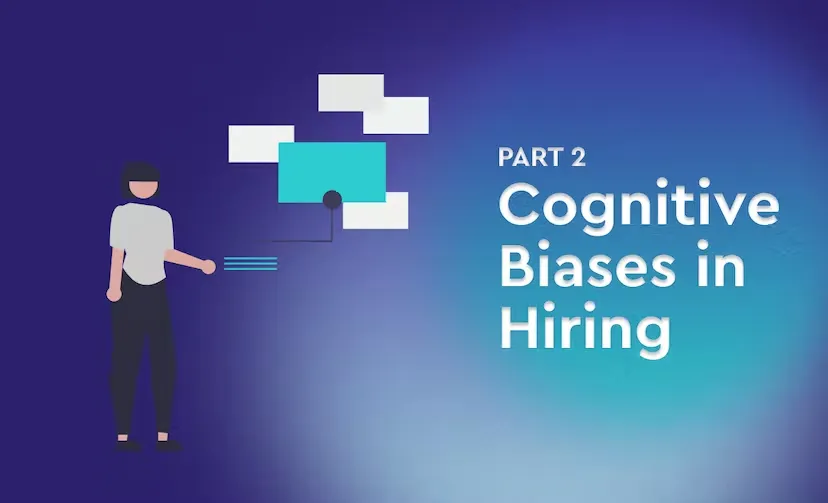
· 10 min read
In this second post, we’re continuing to shed light on various cognitive biases, defining five more and explaining how to reduce their potential impact on your hiring process.

No matter how much you try to be impartial, your mind can get the best of you. Cognitive biases are often subconscious, making it hard to recognize when they affect your decisions.
But understanding what types of bias in hiring and biased hiring are and accepting that we have them enables us to design and implement structures to limit them as much as possible.
In part one of our cognitive bias series, we talked explained what cognitive bias is, described several types of cognitive bias and cognitive bias test, and offered a few examples of how those cognitive biases can infiltrate the remote candidate experience.
In this second post, we’re continuing to shed light on various cognitive biases, defining five more, explaining how to reduce their potential impact, shed light on incorporating DE&I into on demand hiring.
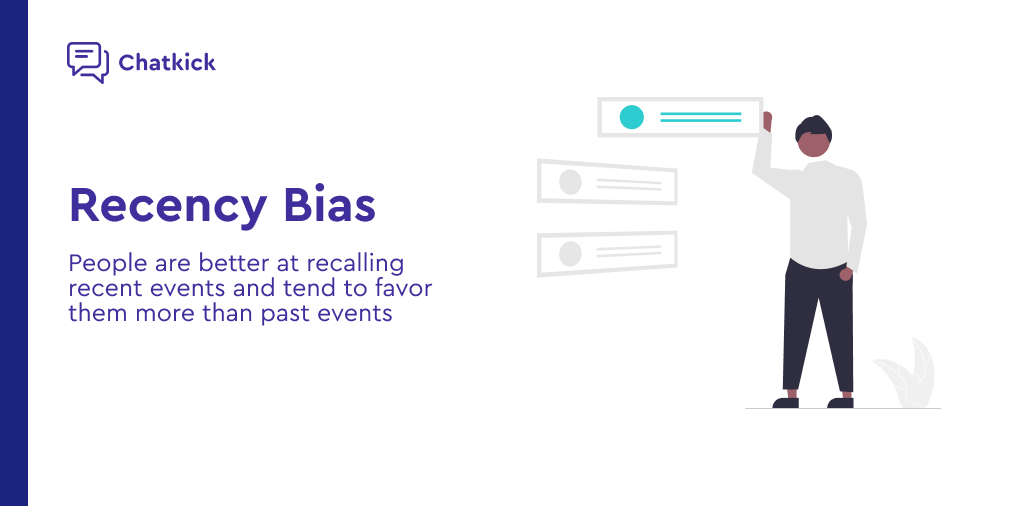
Recency bias comes into play because people are better at recalling recent events and tend to favor them over past events.
In other words, it’s much easier to remember the conversation you had with someone five minutes ago than the discussion you had with them five days or five years ago. And if you need to make a decision based on what you’ve talked about with that person before, you’ll probably give more weight to what they said in your latest chat.
A prime example of recency bias occurs in the courtroom.
Juries hear lawyers’ closing arguments right before they deliberate. Although attorneys presented a wealth of information over the past few weeks or months, juries often remember the closing arguments best and factor them more heavily into their final decisions.
There are many ways recency bias can arise in the hiring process, starting from the moment your team receives resumes. For example, screeners may review hundreds of prospect candidates’ resumes per day, but they are more likely to recall and act on the ones they recently read.
A candidate may be performing well in an interview but then says something at the end of the conversation that makes you question their abilities and character. Even though they already made a great first impression and could be a good hire, ending on a sour note might stick with you more, impact how you fill out your feedback form.
And when making a final decision, hiring managers, interviewers, and recruiters are more affected by their experiences with candidates they talked to last versus the ones they interacted with at the beginning of the cycle.
Recency bias is tough to control because you can never take order out of the equation. But you can:
Randomize the order of your screening calls and interviews. If someone applied to your job as soon as it was posted, they shouldn’t be penalized for doing so. Wait until you have a good chunk of candidates in your pipeline before scheduling their screening calls and randomize them such that the people who apply first aren’t necessarily interviewed first. Continue being conscious of the order in which you interview candidates and talk about them as a group so that you can make a good hire.
Score candidates as you go. Waiting until you’ve already interviewed multiple candidates in a day isn’t a good time to go back and rate all of them 一 your latest calls will stick out in your mind more prominently. Using a tool like Chatkick allows HR teams to pre-configure surveys and remind interviewers to fill out feedback forms either on the call or immediately afterward.
Record interviews so you can refer back to them. An excellent way to remind yourself of an earlier interview is to rewatch it. Video platforms like Chatkick record interviews and provide transcriptions noting when interviewers asked each question. Flagging the questions makes it much easier for interviewers and HR teams to jump straight to where their memory is hazy and make sure they don’t neglect a good hire.
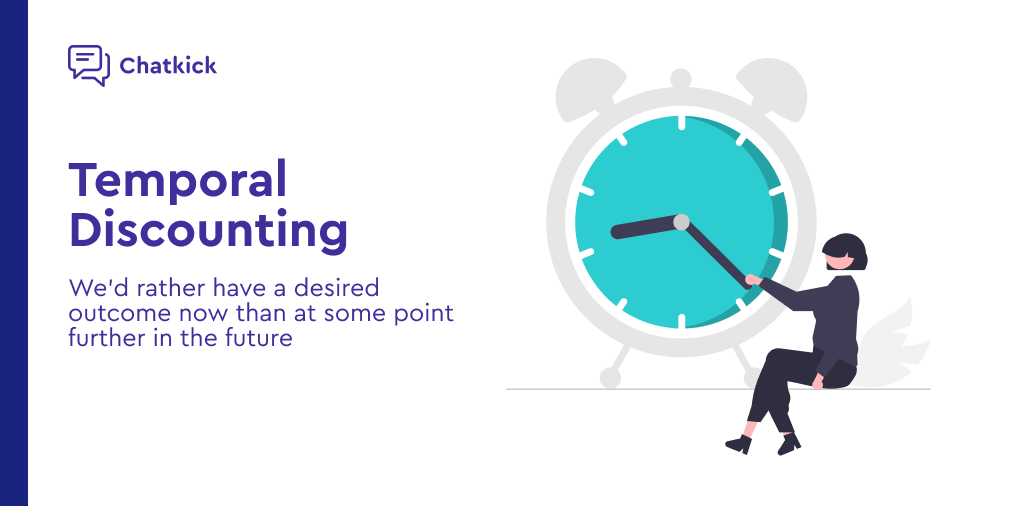
Humans tend to prioritize the short term over the long term in that we prefer present rewards over future ones. Put another way, we perceive a desired result in the future as less valuable than one in the present.
You’ll know that even young kids experience temporal discounting if you’ve ever heard of the marshmallow experiment.
In the test, an adult puts a marshmallow or other piece of candy in front of a child. Then, they explain that the child can’t eat the marshmallow until the adult comes back, and if they are able to restrain themselves until then, they’ll get an even bigger reward.
As you can imagine, many little kids want the piece of candy so badly that they cave and eat it. They discount the future reward because a treat exists in front of them right now.
Say you’ve been trying to fill a role for what feels like forever, but then a candidate magically appears in your pipeline.
Even though that person may not be a fantastic fit, you might hire the 一 not because they are a good hire, but because you feel there’s no point in waiting for someone better to come along.
Temporal discounting could also occur when you have people in your pipeline but are under a time crunch. Maybe you’ll be more partial to someone who has done exactly the role you’re hiring for so can hit the ground running but overlook the fact that they don’t have much potential to impact the organization outside of that.
Because you need to hire someone now, you don’t wait to interview better candidates in the future.
Temporal discounting is especially tough in a candidate’s market. Companies need to make good hires quickly, but not at the expense of talent. So, we recommend:
Setting a target of inbound candidates. Hiring the first and only person who comes into your pipeline probably won’t yield the best results. So before you even post the job description, pick a reasonable number of inbound candidates to shoot for and try to delay the screening and interview process until you’ve hit it.
Give yourself plenty of time to make a decision. Having too tight a timeline can cause temporal discounting to spike because you’re hiring out of desperation. HR teams should be conscious of how they design their hiring strategy and plan for new hires far in advance.
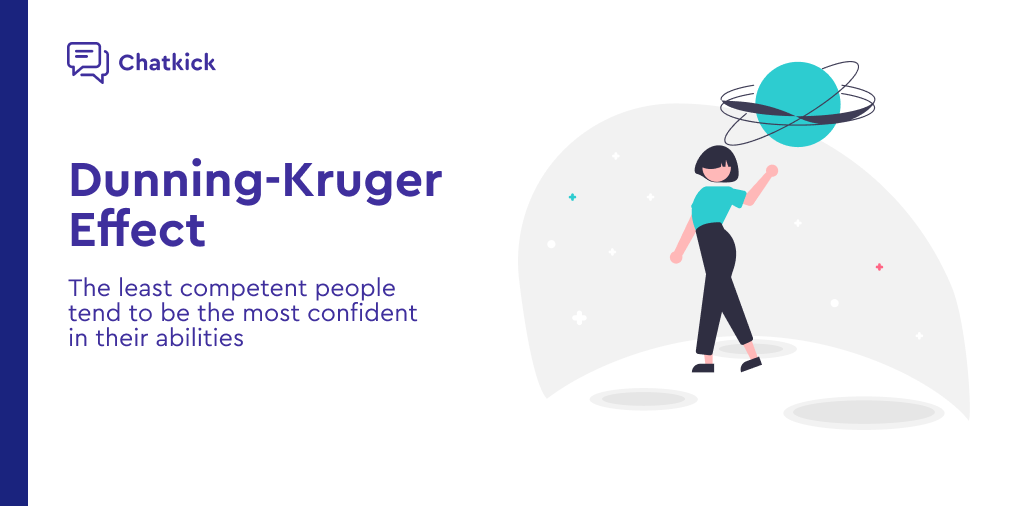
Unfortunately, the least competent people tend to be the most confident in their abilities. We call this phenomenon the “Dunning-Kruger” effect.
This effect is named after the two researchers who discovered this effect through a series of experiments. Dunning and Kruger gave participants humor, logic, and grammar tests and found that the people who scored in the lowest percentiles tended to overestimate how well they performed.
You’ve likely experienced the Dunning-Kruger effect in social situations.
For example, you might be a former curling player and overhear someone talking about the Olympics next to you. He doesn’t know you’re an ex-curler and continues to assert that curling is actually very simple, doesn’t take any skill, and so on.
You try to chime in, but he insists his view is correct and that you don’t know what you’re talking about. That’s Dunning-Kruger in a nutshell.
Now, the Dunning-Kruger effect doesn’t just spring up in social settings; it also rears its head in the hiring process.
When people are underqualified for a role but think they are overqualified, they will inflate their resume, misrepresent their capabilities in interviews, and speak with great confidence. This person may seem wonderful to screeners and interviewers.
But once the candidate is hired and starts working, it becomes clear that the candidate wasn’t a good hire 一 they weren’t as skilled or experienced as they said they were. Falling prey to the Dunning-Kruger effect can cost companies time and money training or rehiring.
The Dunning-Kruger effect is particularly hard to sniff out because the worst candidates can come off as the most self-assured and prepared. So it’s important to:
Do assessments. Testing a candidate’s abilities is a great way to suss out the Dunning-Kruger effect. If you’re giving someone a technical assessment or conducting a case-style interview, there’s no way to escape the truth. It will become abundantly clear whether a candidate exaggerated on their resume or not.
Get references. Sadly, the Dunning-Kruger effect usually isn’t apparent until it’s too late. So take the time to do your due diligence. Ask for multiple references and consider contacting people candidates have worked with in the past to ensure you’re not ignoring red flags and know what the candidate is capable of ahead of time.
We all make snap judgments about people without even realizing it, and much of that is due to halo and horn effects. These two types of bias in hiring go hand in hand, but let’s take a closer look at each one separately.

A halo effect materializes when we optimistically judge someone based on initially perceived traits, such as attractiveness. A positive first impression leads people to treat someone more favorably, so much so that they are willing to disregard other not-so-desirable qualities.
For example, conventionally attractive and tall people are often perceived as more competent, intelligent, trustworthy, and successful. But none of those physical attributes have anything to do with the person’s abilities at work.
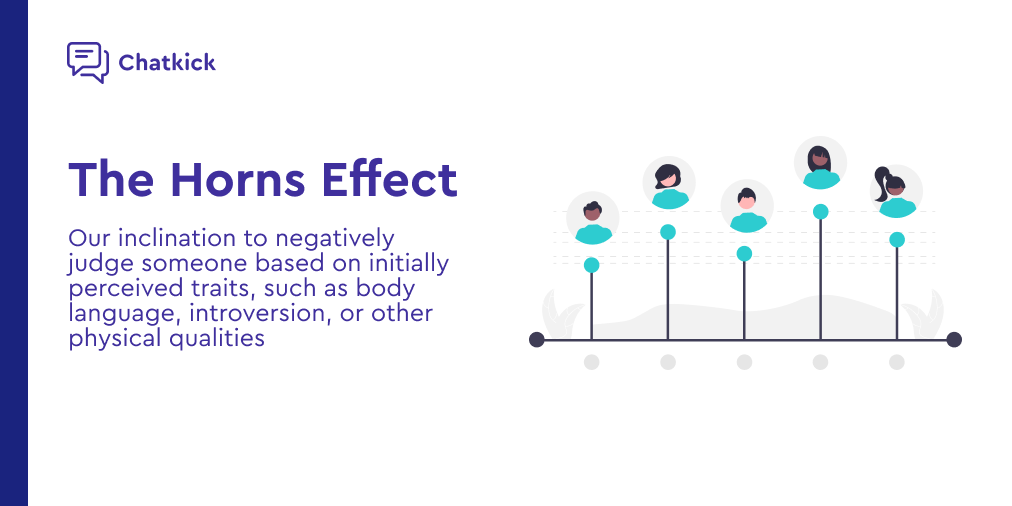
The horn effect is essentially the opposite of the halo effect. We’re inclined to judge someone based on negatively perceived traits, such as body language, introversion, or other physical qualities.
For example, someone with a baby face might be perceived as too young for a senior management role, even if they have all of the relevant qualifications.
First impressions can help or hinder a candidate’s chances, but they shouldn’t have so much of an influence on outcomes as they do.
Many companies inadvertently encourage this type of bias in hiring by making candidates turn on their video cameras, causing the interviewer to potentially form an impression based on the way someone looks.
That’s not to say that you should never have live interviews, but you should be conscious of the fact that halo and horn effects may be more likely to creep in. In addition, the screening process is subject to less obvious halo and horn effects; big-name colleges or previous employers can distort how a recruiter or hiring manager perceives a candidate’s qualifications.
There are several ways to reduce the risk of succumbing to the halo and horn effects, including:
Blind resume reviews and interviews. Symphony orchestras often have blind auditions to get around the halo and horn effect, and corporate workplaces can adopt the same strategy. Removing irrelevant details on a resume and interviewing candidates over the phone rather than over video conference calls can limit interviewers’ reactions to a candidate’s looks or other characteristics.
Informing a candidate of what will happen ahead of time. Being transparent about how interviews are conducted, your workplace’s dress code, or other factors that could affect an interviewer’s first impression will help the candidate put their best foot forward.
Having a range of screeners and interviewers. Having a diverse set of screeners and interviewers who all have the same influence on the final decision is a good way to counteract any unwitting halo or horn effects in order to make a good hire.
There’s not a full-stop solution or cognitive bias test to eradicate cognitive bias, so organizations must constantly reevaluate their hiring process and enact policies to reduce cognitive bias as much as possible.
Of course, that’s no walk in the park. And because we’re human, we’re bound to make mistakes. However, we should not let this lessen the remote candidate experience.
The good news is that technology like Chatkick can help enforce methods of limiting cognitive bias all while enhancing your hiring process overall.
Sign up for a personal demo to learn how Chatkick can make your hiring process more objective and effective.